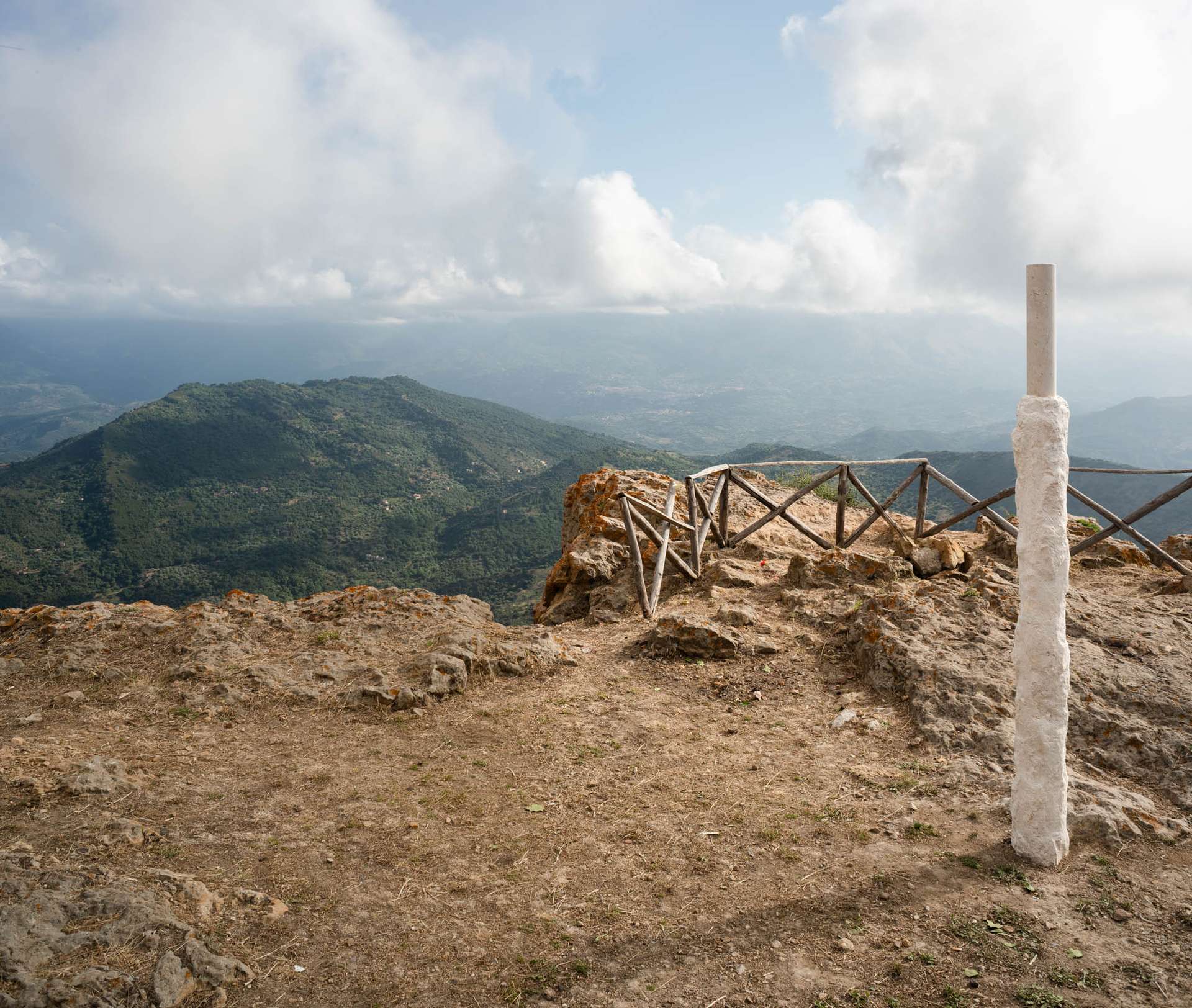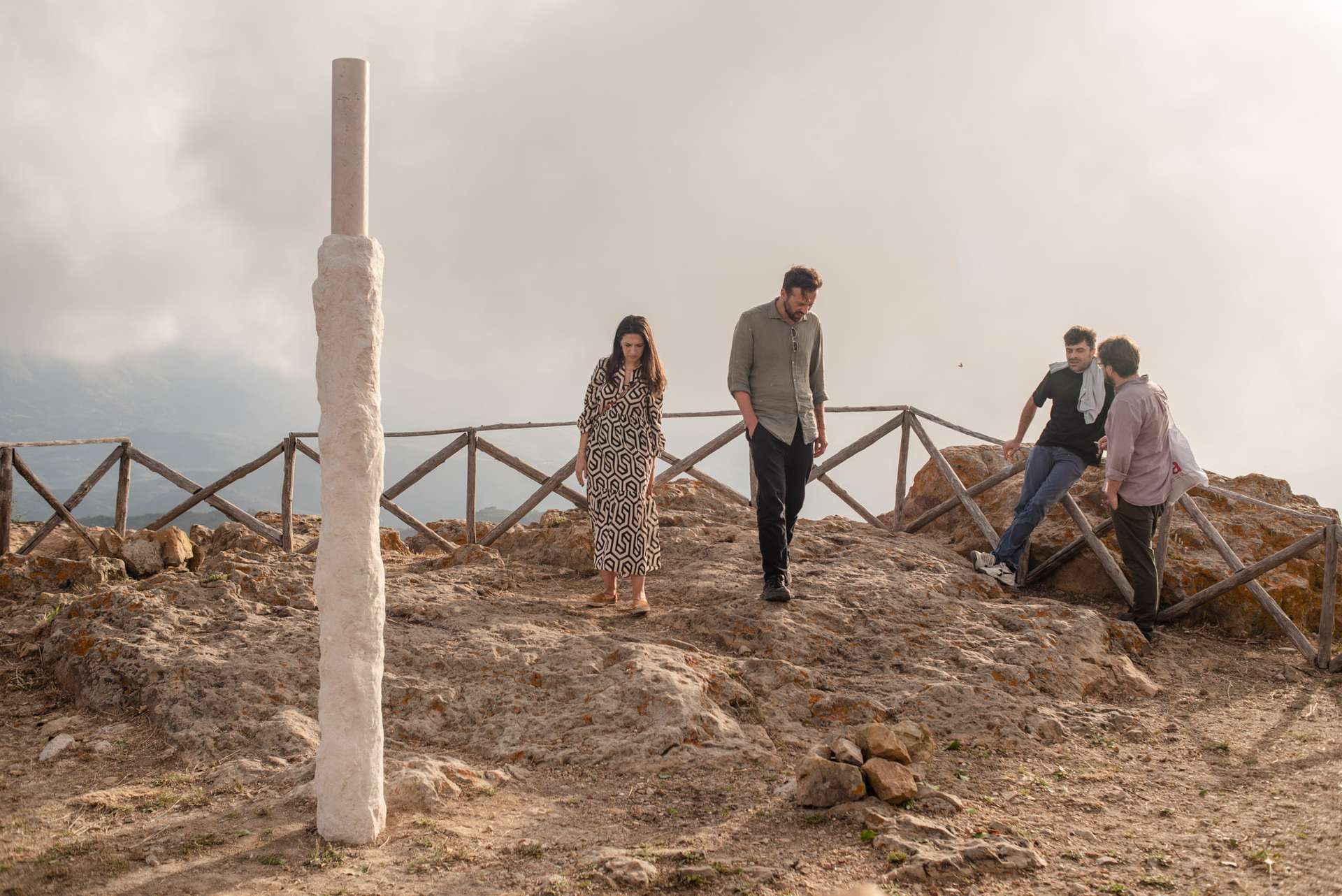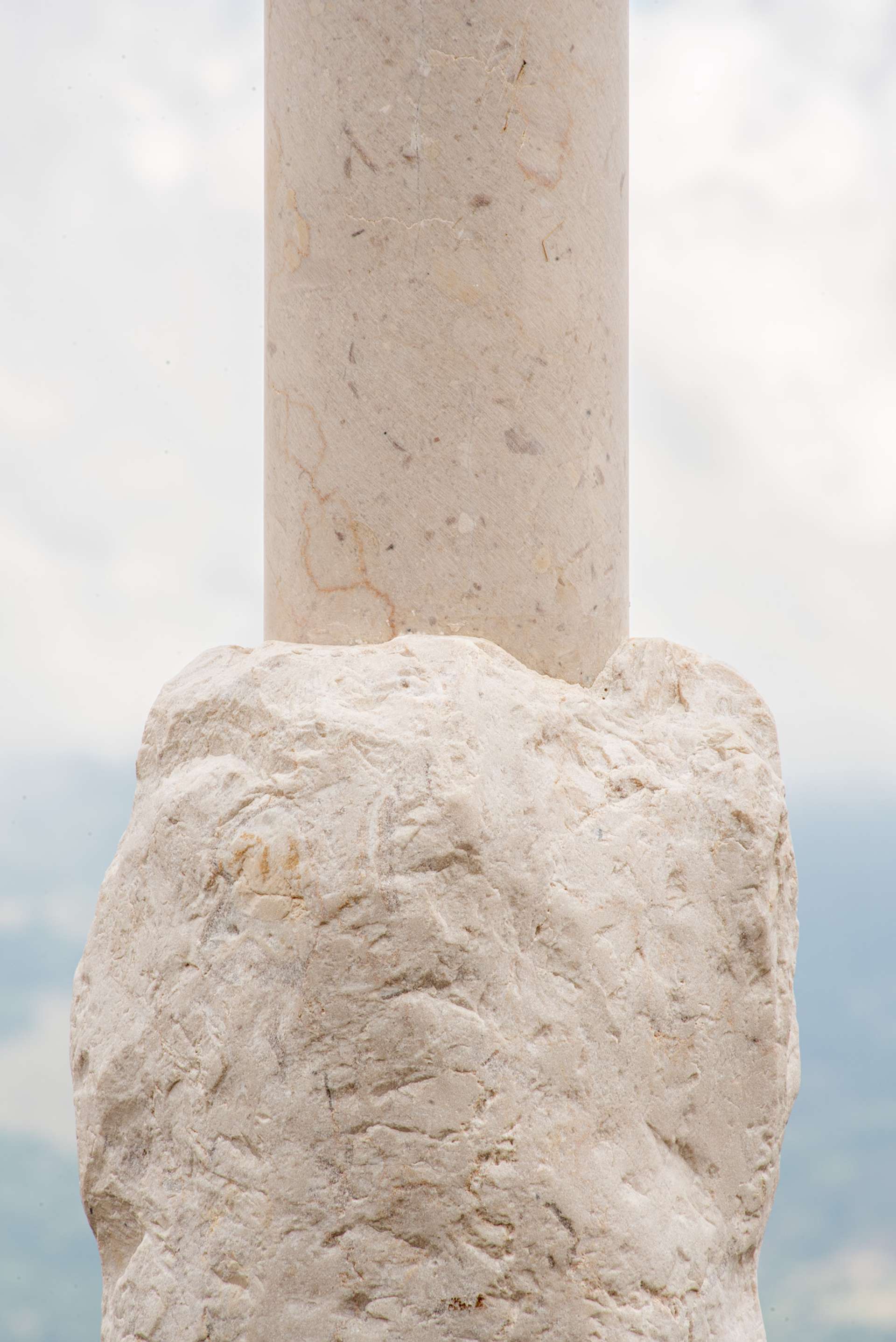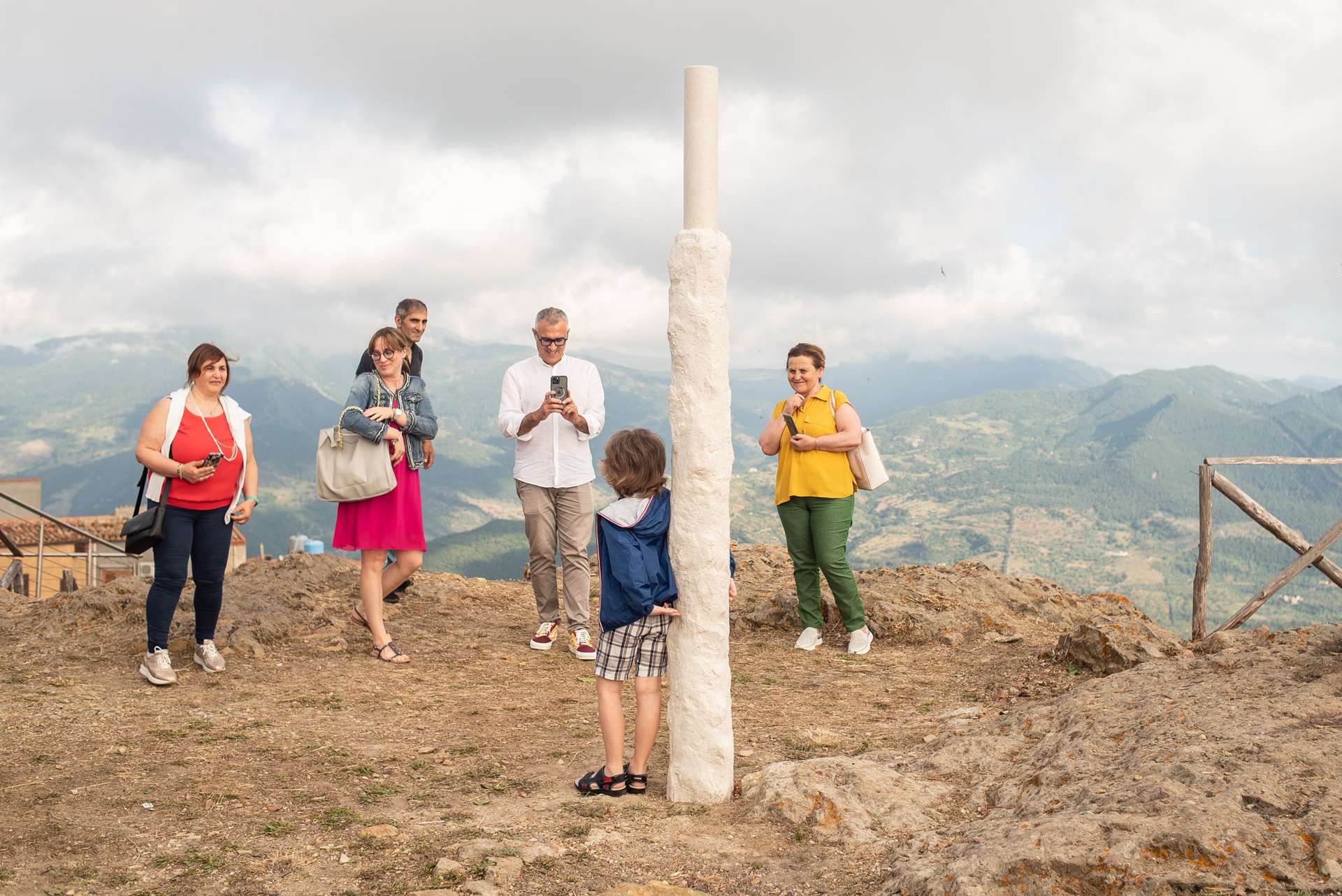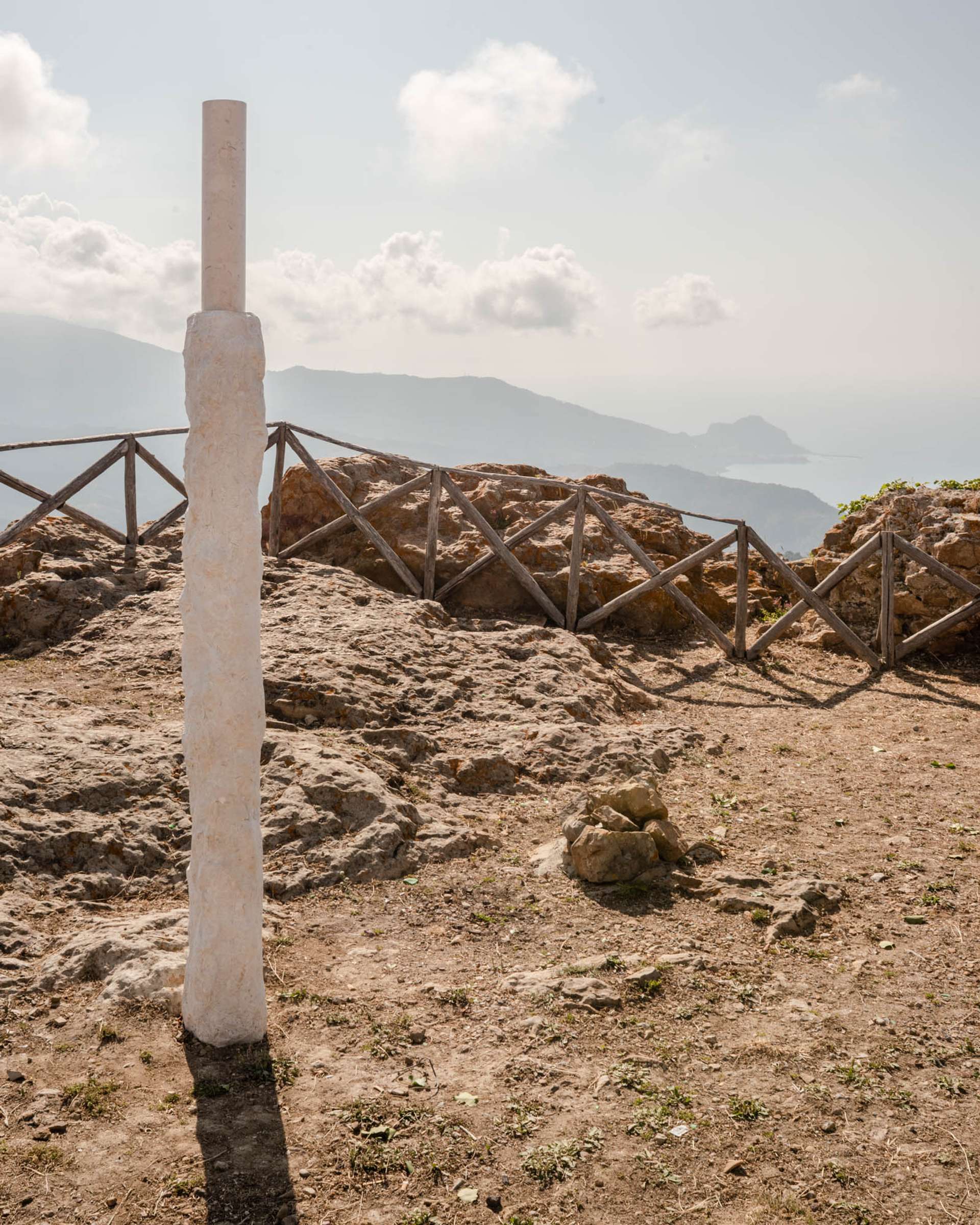Axis Mundi (literally Axis of the World) is the title of the project devised by Israeli artist Ella Littwitz for the village of Pollina, on the occasion of the fourth edition of Una Boccata d’Arte.
In the process of studying the territory, the meeting with Giulio Gelardi, “book-man”, historian, militant botanist and cultivator of manna, an ancient crop in the Madonie district, was invaluable.
A meeting between two Mediterranean inhabitants who in the study of nature find the ideal prism with which to explore the world and society.
Ella and Giulio speak the same language, though not the same idiom.
It is the language of the study of plants, of history, of the true relationship between earth and man, sky and soil. In this vision, the stories of the elopement of a Norman princess and an Arab vizier, Francesco Maurolico’s Renaissance observatory, the farmers of the Pollina countryside, the harvest of manna, the lightning that strikes the tower, become for the artist a set of suggestions linked by a common denominator.
Littwitz has designed a new obelisk to be placed in the highest location in the village, where the trigonometric point utilised to map the entire area once stood.
Axis Mundi thus becomes an instrument to capture and express the literature of the village of Pollina.
An attitude of observation is decisive in order to hear its voices and gather its memories.
The sculpture created is abstract and develops along a vertical line joining the earth to the sky. The lower part derives its shape from the “tube” of manna and folgorite, a glassy mass in cylindrical form, hollow inside, produced by the energy released by lightning on sandy ground. The upper part returns to a column, cylindrical, and points up at the sky. Like the mythological phenomenon from which it takes its name, Ella Littwitz’s sculpture Axis Mundi thus reaffirms the ontological interdependence between the plant and animal kingdoms, celestial phenomena and human beings.
ㅤ
Permanent work:
Ella Littwitz, Axis Mundi, 2023, Marble, steel, 255 x Ø 20 cm.
Belvedere Teatro Pietra Rosa, via Alfredo Musotto 21, Pollina (PA).
Not accessible to people with disabilities.
FOR AN ENTIRE DAY WATER AND SKY WERE ONE, THE UPPER WORLD WAS NOT YET SEPARATED FROM LOWER ONE. HORIZON THEN WAS CREATED, TO SEPARATE. "AXIS MUNDI", COMPOSED OF POLLINA’S STORIES, IS REACTING TO THE VILLAGE STRONG CONNECTION BETWEEN METAPHYSICAL AND PHYSICAL, BETWEEN FAITH, GEOGRAPHY, AND NATURE
Ella Littwitz was born in 1982 in Israel where she lives and works. In 2015 she is a laurate of HISK, Higher Institute for Fine Arts (Gent, BE) and she received a BFA from Bezalel Academy of Arts and Design (Jerusalem, IL) in 2009. Sheparticipated in the 12th Istanbul Biennial and had solo exhibitions in major international institutions, such as: Basis, Frankfurt (DE); CCA, Tel Aviv (IL); Kunsthalle St.Gallen (CH); Centro d’Arte La Panera, Lleida (ES); MWW Muzeum Współczesne, Wrocław (PL); Kunstverein, Salzburg (AT). Her works have been exhibited in numerous shows, at the National Museum of Contemporary Art in Athens (GR), the Museum of Contemporary Art in Krakow (PL), Israel Museum (IL), Tel Aviv Museum of Art (IL) and Tallinn Kunsthall (EE). Littwitz has received the Artist Grant for Exceptional Work in Uncertain Times (IL), Dr. Georg and Josi Guggenheim Foundation Prize (CH), Botin Foundation Prize (ES), Stiftung Kunstfonds (DE) and other awards. Her works have been acquired by major collections, such as: Centre Pompidou (FR), Israel Museum (IL), Kunsthaus Zürich (CH), Vehbi Koç Foundation (Istanbul,TR), Tel Aviv Museum of Art (IL) and S.M.A.K. (Ghent, BE).
THE WORK IS AN OBELISK PLACED AT THE HIGHEST POINT IN POLLINA, A MARBLE SCULPTURE THAT BECOMES THE INSTRUMENT WITH WHICH TO RE-EVOKE STORIES AND LEGENDS LINKED TO THE TERRITORY
Pollina is a small town of almost 3,000 inhabitants, situated between the Madonie mountains and looking out over the Tyrrhenian Sea where the seaside hamlet, Finale di Pollina, is located. The legend of Donna Pulina (Lady Pulina) possibly narrates the origins of the village, the result of a forbidden love between a Norman princess and an Arab vizier.
Pollina is a village where time seems to stand still, an enchanting place surrounded by unspoilt nature, a location where community, culture and traditions handed down from generation to generation come together. Among the alleys of the historic centre, visitors find the majestic churches of San Giuliano and Santissimi Giovanni e Paolo, the latter a treasure trove of immensely valuable works of art. The Castle’s ancient watchtower hosted the astronomer Francesco Maurolico in the 16th century, after whom the tower is now named. At the highest point is the marvellous Teatro Pietra Rosa (Pink Stone Theatre), so-called because of the particular colour it takes on at sunset. Built in 1978 by the Venetian architect Antonio Foscari, it presents the characteristics typical of Ancient Greek theatres, along with a breathtaking panorama. Pollina is the home of the ‘white gold’ Manna, a sweet natural sap obtained by making cuts on the trunks of ash trees; its unique qualities and numerous beneficial properties have made it part of the world heritage. Among the many festivals and traditions, the festival of the patron saint, San Giuliano, in July is the most eagerly awaited. Three days packed with history, folklore, faith and processions, such as ‘a prucissioni da farina’ (the flour procession) linked to ancient rural customs.
